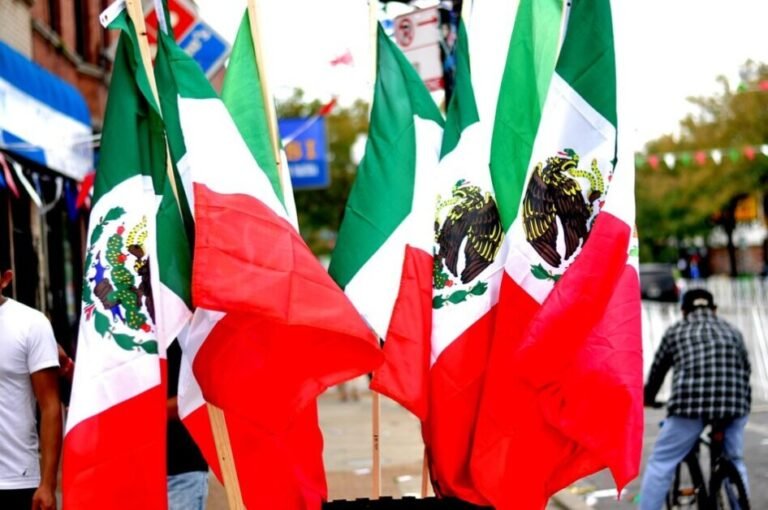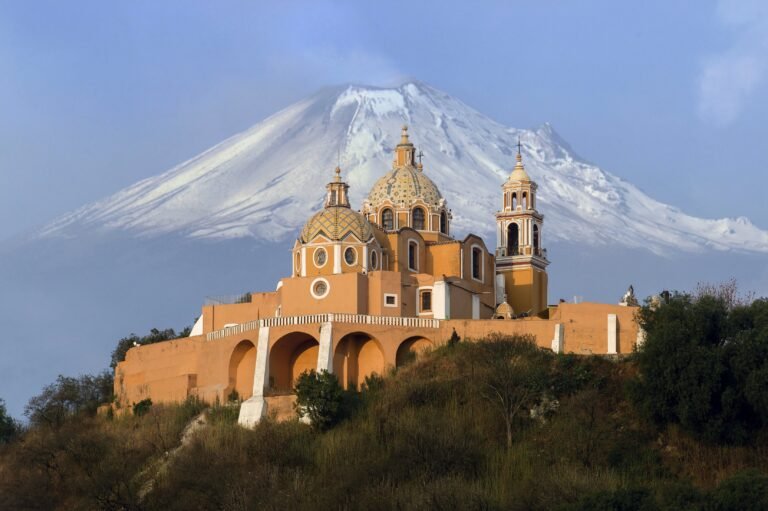What Is Mexico’s National Animal?
Mexico’s rich cultural heritage is often associated with its vibrant traditions, iconic cuisine, and captivating landscapes. However, amidst these diverse facets lies a captivating question: what is Mexico’s national animal? Delving into the depths of Mexican culture, this article uncovers fascinating facts about the country’s flag and heritage. With a tantalizing blend of historical context and intriguing information, this exploration finally unveils the hidden identity of Mexico’s cherished national animal. Prepare to be enthralled by the untold story behind this emblematic creature.
Mexico’s National Animal: The Golden Eagle
Mexico’s national animal is the magnificent Golden Eagle (Aquila chrysaetos). This majestic bird is a symbol of pride and strength for the Mexican people, and it holds great significance in both Mexican culture and history. The Golden Eagle has been revered since ancient times and is deeply ingrained in Mexican folklore and traditions.
Symbolic Importance
The Golden Eagle has a profound symbolic importance to the people of Mexico. It represents power, bravery, and freedom, embodying the values and spirit of the Mexican nation. This iconic creature is often associated with the ancient Aztec civilization, where it was considered a divine bird connected to the sun god Huitzilopochtli. The Golden Eagle’s regal nature and soaring flight make it a perfect symbol for Mexico’s rich history and vibrant culture.
Appearance
The Golden Eagle is a magnificent bird with a wingspan that can reach up to an impressive 7.5 feet (2.3 meters). It is easily recognized by its golden feathers on the nape of the neck, giving it its name. The rest of its body is predominantly dark brown, which helps it camouflage in its natural habitat. The eagle’s sharp, hooked beak and powerful talons are perfectly adapted for hunting and grasping prey. With its piercing eyes and noble countenance, the Golden Eagle exudes both grace and strength.
Habitat
Golden Eagles thrive in a variety of habitats, ranging from rugged mountains to open grasslands. In Mexico, they can be spotted in various regions, including the Sierra Madre Oriental, Sierra Madre Occidental, and the Trans-Mexican Volcanic Belt. These birds prefer nesting in remote areas, often making their homes on cliffsides, where they can build large nests called eyries. Mexico’s diverse landscape provides an ideal environment for these majestic creatures to soar and hunt.
Diet
As apex predators, Golden Eagles have a diverse and adaptable diet. They are opportunistic hunters and will prey upon a wide range of animals, including rabbits, squirrels, reptiles, and even smaller birds. These mighty birds of prey are known for their exceptional hunting skills and can spot their prey from great distances. Once they spot their target, Golden Eagles dive from the sky with astonishing speed and accuracy, using their sharp talons to grasp and kill their prey swiftly.
Behavior
Golden Eagles are solitary creatures, typically preferring their own company. They are fiercely territorial and will fiercely defend their nesting sites from intruders. These birds are known for their impressive flying abilities, soaring through the sky with grace and precision. Golden Eagles exhibit incredible strength and agility, capable of reaching speeds of up to 150 miles per hour (240 kilometers per hour). The distinctive “klee-ee” call of the Golden Eagle echoes through the mountains and serves as a reminder of its dominance in the sky.
Reproduction
The breeding season of Golden Eagles in Mexico usually occurs between January and May, varying slightly depending on the region. During courtship, the male and female engage in an elaborate aerial display, locking talons and descending in a spiral motion. These courtship flights demonstrate the pair’s bond and strength as a potential breeding pair. Once a mate is chosen, the female lays 1 to 3 eggs, which are incubated for about 42 to 45 days. Both parents take part in rearing the chicks, providing them with food and protection until they fledge.
Conservation Status
Despite its cultural significance, the Golden Eagle faces numerous threats in Mexico. Habitat loss, due to urban development and deforestation, poses a significant risk to their population. Additionally, illegal hunting and pollution further contribute to their decline. To ensure the survival of these majestic birds, conservation efforts are crucial. Organizations such as the National Commission for Knowledge and Use of Biodiversity (CONABIO) work tirelessly to protect the Golden Eagle and its natural habitat, implementing conservation strategies and raising awareness about the importance of preserving these magnificent birds.
Significance in Mexican Culture
The Golden Eagle holds a special place in Mexican culture and is deeply revered by the Mexican people. It is a national symbol and has been prominently featured on Mexico’s coat of arms since the time of the Aztecs. The image of a Golden Eagle perched on a cactus, devouring a snake, is a powerful representation of Mexico’s strength and resilience. This iconic symbol is displayed on the country’s flag, currency, and various national emblems. The Golden Eagle’s charisma and symbolism have made it a beloved and celebrated creature throughout Mexican history.
The Golden Eagle in Mexican Folklore
The Golden Eagle plays a significant role in Mexican folklore and mythology, captivating the imaginations of generations. Ancient Aztec legends depicted the Golden Eagle as a creature blessed by the gods, believed to carry the spirits of fallen warriors to the heavens. It was believed that warriors who died in battle would transform into these powerful birds, earning eternal freedom and honor. The Golden Eagle’s presence in folklore reflects the deep admiration and respect that Mexicans have for this majestic creature, as it represents bravery and transcendence.
Conclusion
In conclusion, Mexico’s national animal, the Golden Eagle, is not only a magnificent bird but a symbol of power, strength, and freedom. Its presence in Mexican culture, history, and folklore speaks volumes about the deep connection between the Mexican people and their natural heritage. As guardians of this national treasure, it is our responsibility to protect the Golden Eagle and ensure its survival for future generations, so they too can witness the grace and majesty of this remarkable creature.








